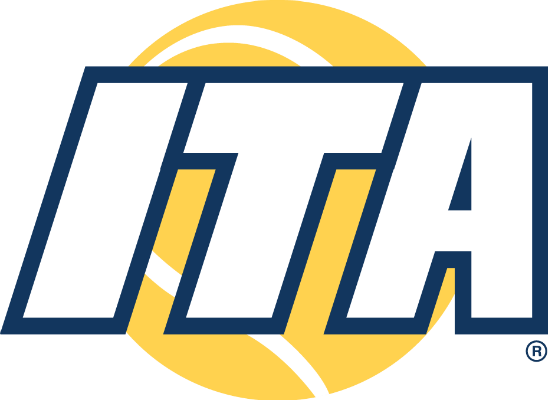Research Tips
– Include schools that meet most but not all of your criteria
– Use the US News Rankings website for a comprehensive search
-Use this Net Price Calculator to gauge possible expenses
ITA COLLEGE CONNECT
MAKING IT EASIER FOR JUNIOR TENNIS PLAYERS TO EXPLORE PLAYING OPPORTUNITIES IN COLLEGE TENNIS




SO YOU WANT TO PLAY COLLEGE TENNIS?
The Intercollegiate Tennis Association (ITA) is the governing body of college tennis and a coaches association, both an advocate and an authority for the sport and its members. The ITA is committed to serving college tennis and returning the leaders of tomorrow while promoting both the athletic and academic achievements of the collegiate tennis community.
As the governing body of collegiate tennis, the ITA is committed to guiding you through the process of joining a college tennis team. We understand that the recruitment journey is unique for every prospective student-athlete (PSA). In the sections to follow, we aim to educate you with the latest information on the college tennis pathway, along with recommendations for "best practices."
As you begin this journey, keep in mind that a fulfilling college tennis experience includes various elements: the location of the college, academic opportunities, campus ambiance, team dynamics, and much more. We urge you to maintain an open mind throughout the process, giving due consideration to factors beyond tennis. Ultimately, college tennis is about pursuing higher education in the classroom while forging relationships and creating memories that last a lifetime.
College tennis offers abundant opportunities for players of diverse skill levels. If you possess a genuine passion for the sport, a strong work ethic, and aspire to be part of a team, we firmly believe there's a place for you on a college tennis roster.
To aid you in compiling a suitable list of colleges based on your current skill level, we encourage you to acquaint yourself with the ITF World Tennis Number (WTN) at www.worldtennisnumber.com. WTN has now become the official and exclusive rating system endorsed by the ITA and college tennis. This list is not meant to be exhaustive, but just a starting point for your search.
At any point in this process, simply click the "FIND A COLLEGE FOR YOUR LEVEL" scrolling button, input your gender and current WTN rating, and a list of colleges tailored to your current WTN will be generated.
+1,700
PROGRAMS
+3,000
COACHES
+19,300
STUDENT-ATHLETES
+7,400
SCHOLARSHIPS
Understanding
The College
Tennis Pathway
Step One:
Step Two:
Step Three:
Step Four:
Step FIVE:
Step SIX:
Step SEVEN:
Step EIGHT:
Step Nine:
Step Ten:
Step Eleven:
1
Learning About the College Tennis Divisions
College tennis consists of seven divisions with various sizes of universities, scholarship limitations, and eligibility requirements. It is important to understand these differences before continuing to the next step.
2
Understanding the College Tennis Playing Levels
College tennis features a wide range of tennis abilities. Please use the links below to see where you might fit in. Once you understand the WTN, click on the "Explore WTN Player Ranges" button to view WTN ranges for each division.
I Know My WTN Rating
I Don't Know My WTN Rating
I Don't Have A WTN Rating
3
What Am I Looking For?
Now that you understand the levels of college tennis and where you might fit in, the next step is to ask is:
What am I looking for in my college tennis and academic experience?
A good college experience should be about more than the level of the team you might play on. We encourage all PSAs to consider criteria in key areas such as: academics, social & campus life, the location of the school, the atmosphere of the team, and support services for athletes, to name a few.
Below are some questions we suggest you ask yourself as you begin this journey in order to narrow down your choices.
4
Where Might I Be Eligible To Play?
A PSA's eligibility to compete for a college tennis team and receive a scholarship is dependent on which organization oversees athletics at the university you are attending. NCAA, NAIA, NJCAA, and CCCAA all have different rules & regulations when it comes to eligibility. Please refer to each division for eligibility basics. The ITA IS NOT an eligibility center and has no authority over the decisions made by each division regarding eligibility.
5
Making A List & Doing Your Own Research
You know the tennis level of the school you are looking for and you have answers to some very important questions from Step Three (What Am I Looking For). Now it’s time to create your list of schools and coaches that you want to contact.
We suggest coming up with a list of approximately 15 schools that you believe are a good fit for you. Use the links below to help you find schools with college tennis programs.
Find School Based On WTN
Find School Based On Ranking
Find School Based On Division
College Contact List Tracking Sheet
6
Creating A Recruiting Video
Recording Suggestions
Do's and Don'ts
7
Contacting A Coach
An email is most likely one of the first ways you will establish contact with a head coach. As this will be one opportunity at a first impression, it is important your message is clear, well-written, and includes the right information. We have included a sample email along with best practices when making initial contact with a coach.
Sample Email
Do's and Don'ts
Contact Restrictions
Finding Contact Info
8
Your First Conversation With A Coach
Sample Questions to Ask
Do's and Don'ts
9
Taking A Visit
The Basics of Visits
Do's and Don'ts
10
Making A Decision
What Is An NLI and Signing Dates
11
Frequently Asked Questions
WTN entered must be weaker than the average WTN
Teams should be sorted from the weakest Team WTN to the strongest Team WTN
Advice for International Student-Athletes


